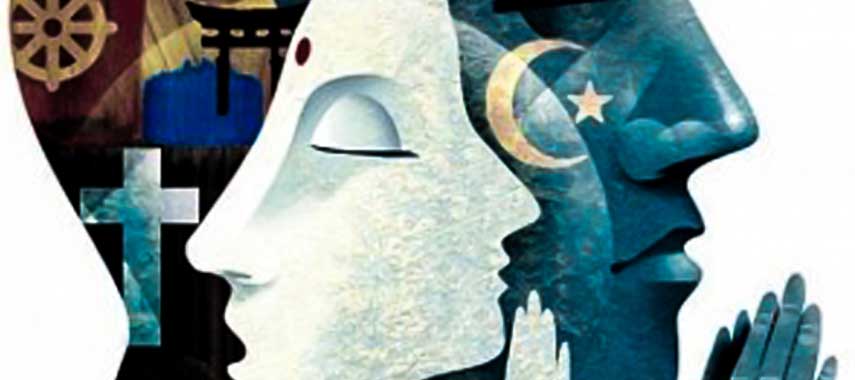Violence against religious minorities in Pakistan has seen a considerable rise in recent years. Non-Muslims constitute about three percent of Pakistan’s estimated population of 200 million. Some 20 percent of the rest are Shia Muslims. Prominent among the non-Muslim minority groups are Christians (2.5 million), Hindus (1 million), and Ahmadis (3 million, considered as non-Muslims according to the Pakistani constitution).
During the 2012-2015 period, as many as 351 cases of violence against religious minorities were reported. Christians, Hindus, Ahmadis and Shia Muslims remained major victims of religious discrimination.[i]
Christians form the major part of the minority population and during 2012-2015 this community remained vulnerable to sexual assaults, harassment and forced conversions in some parts of the country. Some 14 Christians were charged under Pakistan’s controversial blasphemy laws. Nearly 40 attacks on the Christian community, including seven churches, were also reported during the period under discussion[ii]. The All Saints Church in Peshawar suffered the deadliest assault in September 2013, which left over 100 worshippers dead.
Discrimination towards Ahmadis led to the killing of 39 people during 2014-2015. In 2012, six places of worship of the Ahmadis were attacked. According to Ahmadis, they constantly face humiliation, threats to life and property by extremist groups. Anti-Ahmadi laws have played a vital role in separating the Ahmadi community from the majority population of the state.
Hindu community also remained a target of abduction, forced marriages, rape of girls and kidnappings. These factors compel them to migrate to India. In Larkana, a Hindu community center was damaged by the extremist groups in 2014. Biased curriculum has been portraying Hindu minorities as evil and untrustworthy.
Shia’s in Pakistan remained a greater victim of religious intolerance. There were 23 attacks on Imambargahs and Shia mosques, 203 target killings and 1304 deaths in bomb attacks. Sub-sects of Shia Islam also victimized such as Safoora Goth attack on Isma’ilis in Karachi, leaving 46 people dead.
There are multiple reasons of attacks on minorities in Pakistan i.e. misuse of blasphemy law, advocacy of hate content, biased curriculum and non-complimentary constitution. Blasphemy law has been employed by the powerful to prey upon the weak, and it has served to entrench and justify religious discrimination. The operation of blasphemy laws continues to have a detrimental impact on pluralism in the country and feeds into the atmosphere of insecurity and religious intolerance.
The assassination of Governor Punjab Salman Taseer (4 January 2011) and federal minister for minorities Shahbaz Bhatti a few weeks later is evidence of the misapplication of the blasphemy law. The reaction of media and civil society in this regard was strongly in the favor of victim e.g. a Christian girl Rimsha Masih, who was released from the charge of blasphemy by the supreme court of Pakistan in 2014.
Pakistan launched a National Action Plan against terrorism in December 2014 after terrorists raided the Army Public School in Peshawar, killing over 140 children and teachers. Points 5, 9, 15 and 18 of NAP aims at the abolition of extremism, hate speech, sectarianism and protection of minorities. Provincial governments were asked by Interior Ministry to mark the places of worship and properties of minorities and devise a security plan to protect them.
It tried to safeguard the rights of minorities in Pakistan but it was inefficient to deal with this issue. Parliament and government is reluctant to review blasphemy laws. Minorities are constantly under threats of attack and intimidation for forcible conversion to Islam. Minority leaders reported their communities faced restrictions in securing admissions into colleges and universities. Discriminatory laws, forced conversions, bombs and shootings have rendered life as hell for minorities in Pakistan. [iii]
Recommendations
- Record of faith-based target killings and attacks
- Enhanced capacity building trainings for law enforcement agencies
- Periodic progress reports regarding religious attacks
- Curriculum reforms with the inclusion of speech of Quaid-e-Azam on 11 August
- Registration and regulation of seminaries
- Standardized curriculum for seminaries
- Wider access to formal education
- Legislative reforms to curtail hate speech and hate campaigns against minorities
- Government job quota for minorities
- Legislative amendments to the blasphemy law
- Strengthening of National Commission on Minorities
[i] http://jinnah-institute.org/state-of-religious-freedom-in-pakistan/
[ii] Ibid
[iii] http://hinduexistence.org/2015/10/15/hindus-and-other-non-muslims-in-pakistan-are-targets-of-attack-on-life-property-and-identity/

